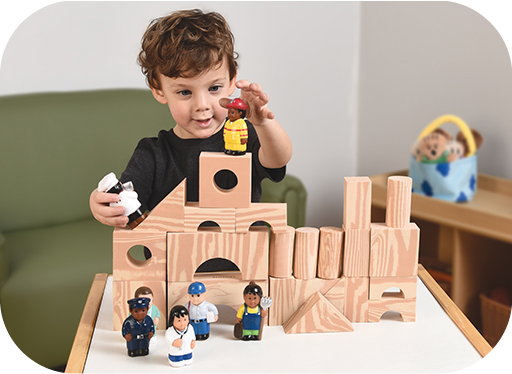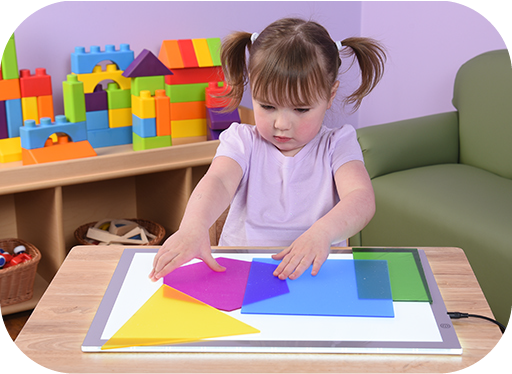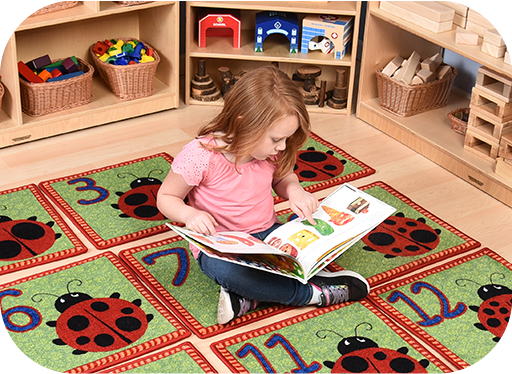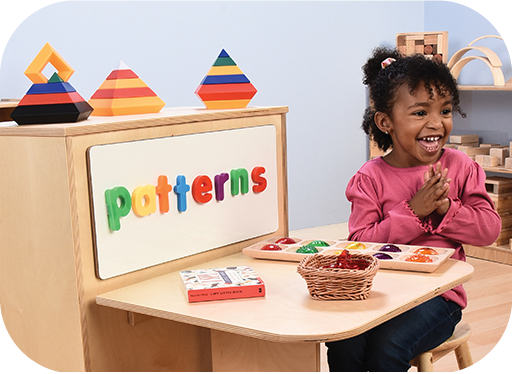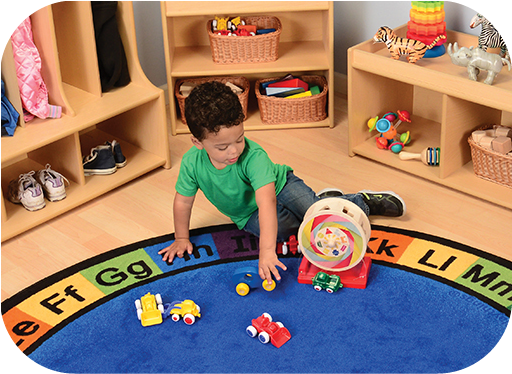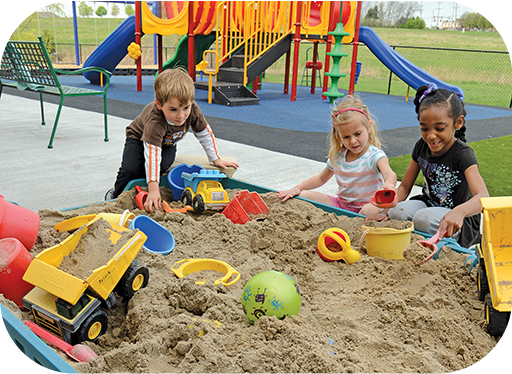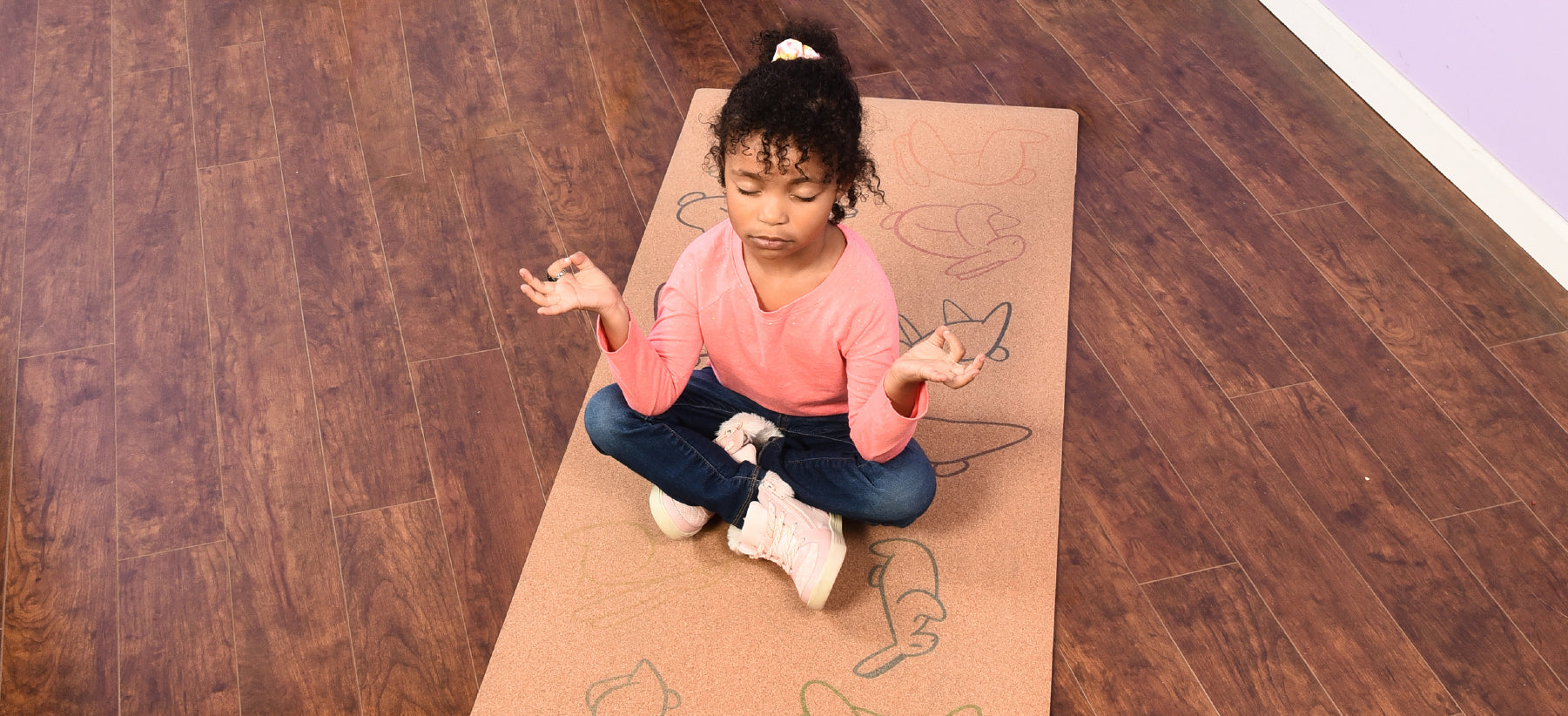
Create a Calm Corner: Sensory Exploration for Emotional Regulation
At Constructive Playthings, we understand the importance of creating a nurturing and supportive environment where young children can thrive. A calm corner provides a safe space where children can learn and practice essential self-regulation skills. Within this quiet refuge, children can learn to manage big emotions, reduce anxiety, and develop coping mechanisms that will benefit them throughout their lives. A calm corner supports emotional regulation by providing a space to de-escalate, process feelings, and return to activities feeling refreshed and centered. We're delighted to share expert guidance and recommend resources to help you establish a calming space in your home or classroom.
Key Elements of a Calm Corner
Adaptive Seating
Adaptive seating provides children with comfortable and supportive options that cater to their individual sensory needs. These options can help children feel grounded and secure, promoting relaxation and focus. For example, a product like a bean bag or the Comfy Hugging Peapod offer gentle deep pressure and a sense of being held or hugged. Additionally, a rocking chair like the Rocking Volcano Balance Chair allows for movement and tactile stimulation. These seating choices allow children to find a position that helps them regulate their emotions and bodies.
Sensory Tools
Sensory tools offer tactile, visual, and auditory stimulation that can help children regulate their sensory input. These tools can provide a distraction from overwhelming stimuli, promote a sense of calm, and help children refocus their attention and manage feelings of anxiety or frustration. They give children a healthy and appropriate way to engage their senses. For instance, the mesmerizing Glittering Sensory Storm Tubes offer a calming visual focus, while the Wooden Breathing Boards provide a tactile and visual aid for practicing deep breathing exercises.
Mindful Movement
Mindful movement activities, like yoga or stretching, can help children connect with their bodies and release pent-up energy. These activities promote relaxation and self-awareness, allowing children to better manage their emotions. Mindful movement can also help improve focus and concentration, making it easier for children to return to their tasks feeling calm and centered. Providing a yoga mat in a clear and calm space can encourage engagement in these activities, and mindfulness and yoga activity card sets focused on breathing techniques and calming strategies can provide helpful guidance.
Visual Aids
Visual aids can provide a focal point for children to help them regulate their emotions. These tools can offer a distraction from overwhelming stimuli and create a sense of peace. They can also help children visualize calming techniques, such as deep breathing exercises, making it easier for them to implement these strategies when needed. A Rainbow Hoberman Sphere can be incredibly soothing with its gentle, rhythmic motion, and tools like the Calm & Connect Interactive Emotions Board can visually guide children through a calming process.
Privacy
Privacy within a calm corner allows children to retreat from the busy classroom environment and have a moment to themselves. A designated area can create a safe and personal space where children can decompress and regulate their emotions without feeling observed. This fosters a sense of security and encourages self-reflection. A calming canopy or a plush, enclosed space like the Cozy Cube can provide this sense of privacy and comfort.
Additional Tips
Creating a successful calm corner involves careful consideration of several factors. Choosing a quiet location away from distractions is crucial. Involving children in the selection of items for the space fosters a sense of ownership and encourages them to use it. Modeling appropriate use of the calm corner by demonstrating calming techniques teaches children how to effectively utilize the space for self-regulation. These additional tips help maximize the benefits of the calm corner and ensure it is a valuable resource for all children.
We hope these tips and resources help you create a calming and supportive space in your classroom. Ready to set up your own calm corner? Browse all of our Calm Corner Products.

